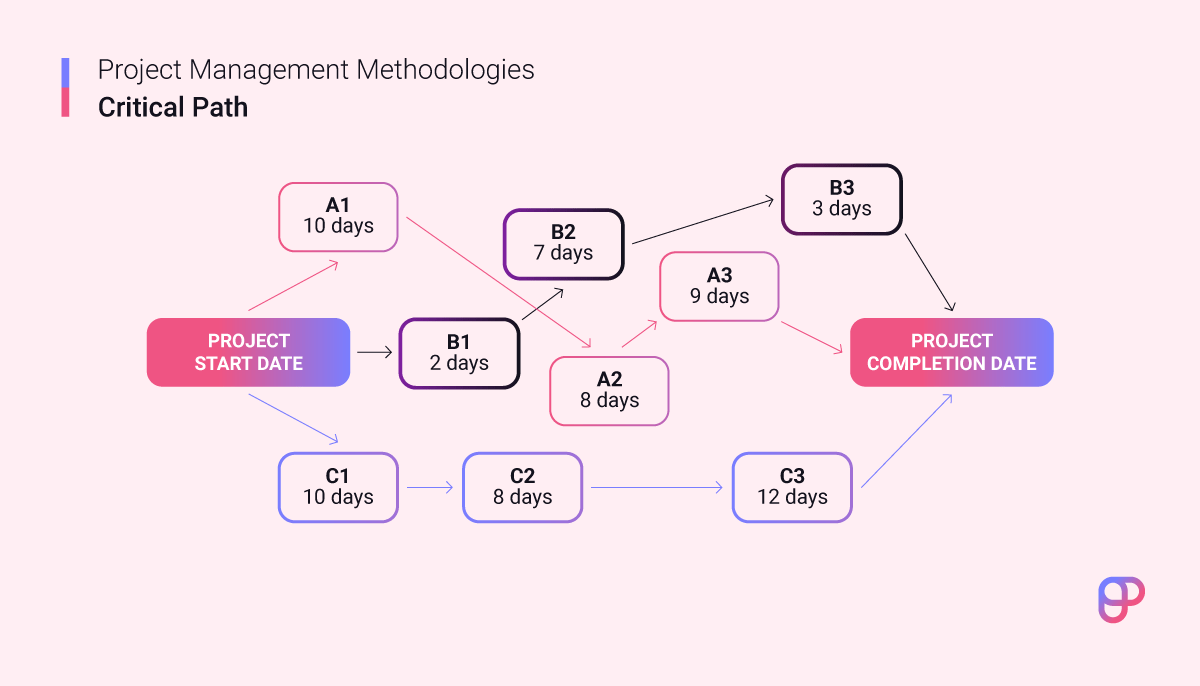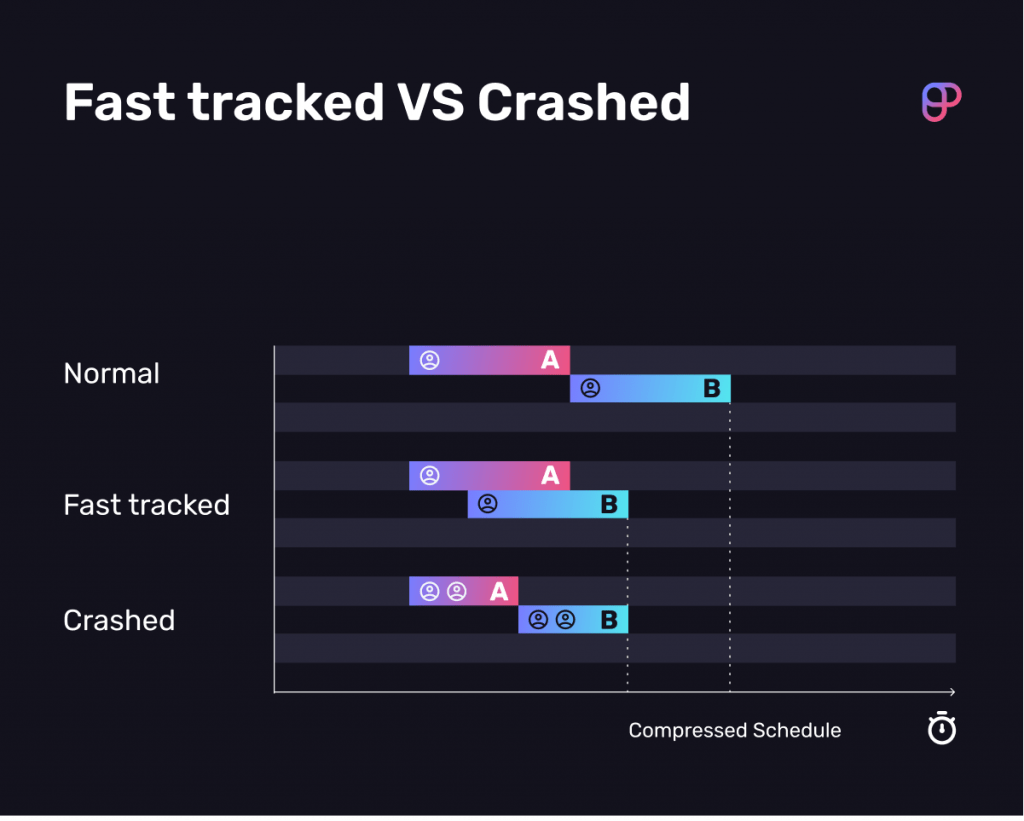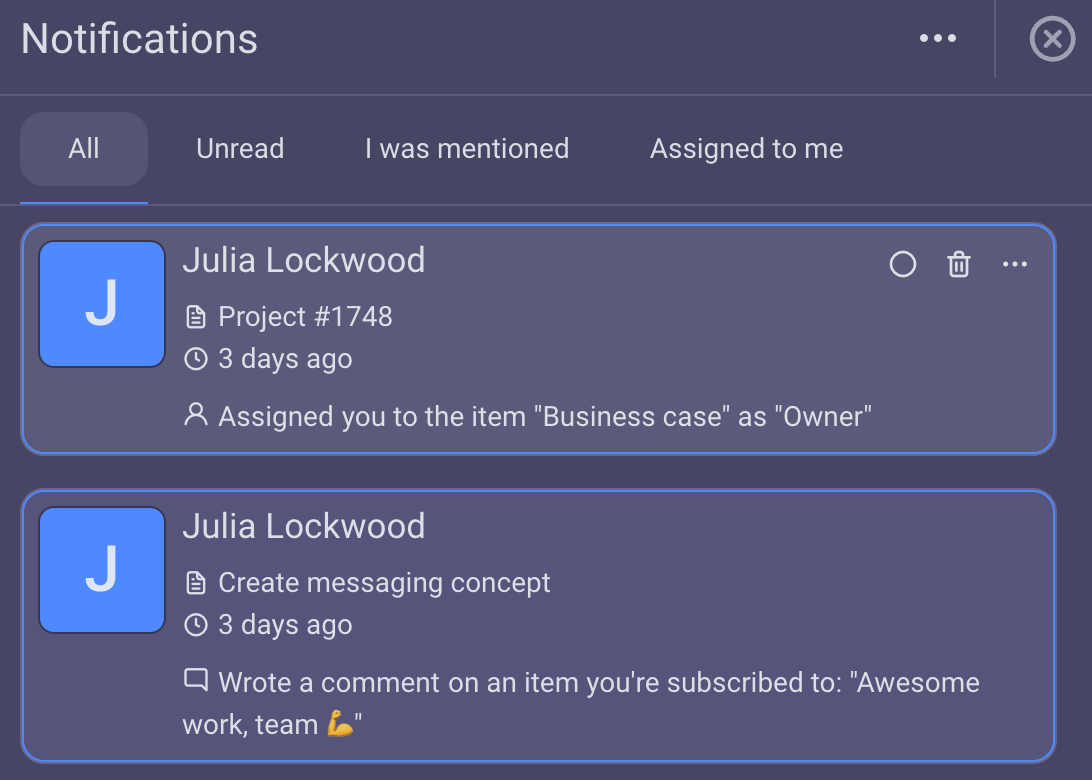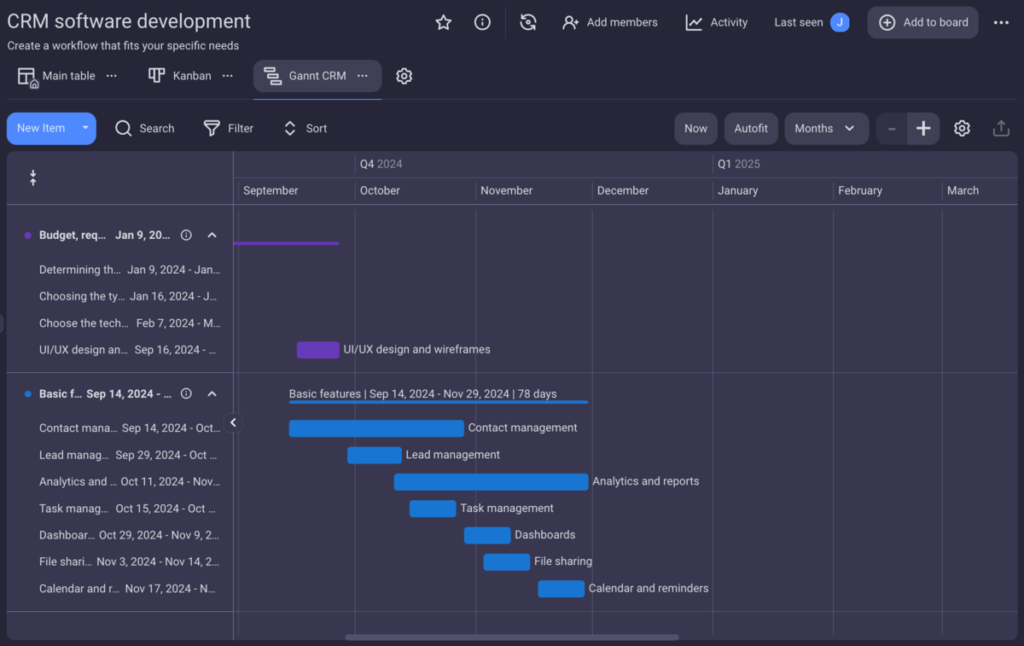What Is Fast Tracking in Project Management? (+ Expert Tips)
If you’re at risk of missing your project deadline, there are techniques you can employ to speed things up and get your project back on track. They’re called schedule compression techniques, and they’re used to hasten project execution while keeping the project scope unchanged.
The 2 most common schedule compression techniques in project management are:
- Project crashing and
- Fast tracking.
With the help of our trusty project management experts — Leigh Ann Gunther, PMP®, ACP®, Senior Technical Product Manager, Comcast & Director of Agile at PMI Delaware Valley Chapter, and Andrew Shih, certified PMP, CFA, FRM, and founder of PMAspirant.com — this text will cover fast tracking in its entirety and explain:
- What fast tracking is,
- How fast tracking differs from crashing in project management,
- When and how to use fast tracking, and
- The benefits and dangers of employing fast tracking to compress your project schedule.
If any of this sounds useful, keep on reading!

Table of Contents
What is fast tracking?
One of the simplest definitions of fast tracking comes from PMI’s PMBOK® Guide (7th Edition) which defines it as “a schedule compression method in which activities or phases normally done in sequence are performed in parallel for at least a portion of their duration”.
However, there is one thing this definition fails to mention — the only tasks that can be fast tracked are those that lay on the critical path.
PMI’s own PMBOK® Guide (6th Edition) gives a bit more information on this topic.
“Fast tracking only works when activities can be overlapped to shorten the project duration on the critical path.”
This means that — in reality — fast tracking is a technique used to speed up project execution by performing select tasks on the critical path simultaneously instead of sequentially (at least part of the way).
It’s used when it’s necessary to complete the project on time, without making big changes to the project scope.

The critical path is the longest string of dependent tasks that — once completed — bring a project to a close.
In the example above, the string of tasks marked C1, C2, and C3 represents the critical path because it has the longest overall duration (30 days).
We fast track only the tasks that lay on the critical path because only the changes made to the critical path affect the length of the project. Using fast tracking anywhere else would only increase risks, without actually compressing the project timeline.
Take note that the critical path may change over the course of the project. The critical path can change midway through the fast tracking process, and it is even possible to end up with 2 critical paths.
All this adds more layers of complexity and further increases the risk of fast tracking the project.
💡 Plaky Pro Tip
Understanding the critical path is necessary to fully grasp the benefits and dangers of fast tracking. Therefore, we recommend reading our full guide to the critical path method:
Fast tracking vs crashing in project management: Key differences
Fast tracking and crashing are 2 very common schedule compression methods in project management.
They are similar in that they both aim to shorten the duration of the project, but they are used in different situations and affect different aspects of the project.

Fast tracking entails overlapping the execution of 2 or more tasks or project phases on the critical path, therefore shortening the overall time needed to complete the project.
It doesn’t require any additional resources — only the reshuffling of the project schedule. However, there is a fair share of risk involved.
Project crashing entails boosting resources to speed up the project. This can mean:
- Employing more people,
- Borrowing members from another team,
- Requesting that teams work overtime,
- Offering incentives to boost productivity, or
- Acquiring technology/machinery that would enable faster work.
All of this requires a budget increase that not all customers are willing to provide.
It’s worth mentioning that both fast tracking and crashing are usually “crisis” methods. If you’re thinking of using them, it often means that something in your project has gone wrong and you’re at risk of breaching the deadline.
However, as Leigh Ann Gunther explains, it’s possible to use fast tracking as a risk mitigation tool if careful preparation is done in advance.

“A project can trend behind for many reasons, and it’s frequently related to scope creep, unidentified scope, or project team problems, such as unplanned absences and communication gaps.
If a project manager and team have performed a risk analysis and a risk mitigation plan, ways to fast track a project can be used as mitigating measures.”
Fast tracking in project management — example
To illustrate how fast tracking would work in a real project, let’s take a look at a simple example.
Imagine your goal is to launch a new product — a newer model of an existing car. However, the final design is running late, which is hindering you from ordering the necessary materials needed for manufacturing and assembly.
Given that the goal is to produce a newer model of an existing car and not a different car altogether, you should know most of what is needed to construct the new model. Therefore, you can use fast tracking and have the design and material acquisition phases done partly in parallel.
Doing this will enable the other teams to continue working and have parts of the car already finished by the time design turns in their final blueprints.
For instance, if the final look of the dashboard is what’s holding the design team back, but they already know what the seats should look like, you can order the materials and begin manufacturing the seats while they work out the rest of the design.
However, projects aren’t always simple, and fast tracking isn’t without its flaws. In fact, the larger the project, the riskier fast tracking becomes. Even a relatively simple project — such as the one above — can get very complicated very quickly.
Say the materials for the seats have been acquired and the planned number of seats has already been manufactured. Then, the design team announces that the interior of the car will require a revamp after all, and the seats will have to be smaller than originally planned to fit the new design.
And just like that, all your efforts have fallen through, and you’ve lost vast amounts of money and time in an effort to do the exact opposite.
When to fast track a project
Given the increased project risks that come with fast tracking, this schedule compression method should be used sparingly, according to Andrew Shih.

“Fast tracking a project can be a good idea in the following situations:
- When there is a pressing deadline or time constraint that cannot be extended,
- When the project is facing delays, and there is a need to accelerate progress to meet the original schedule,
- When there are no dependencies between the project activities, or
- When the dependencies can be managed so that the activities can be overlapped to meet the deadline.”
Fast tracking doesn’t inherently increase the cost of the project. But, if it fails, it can end up costing you more time and money than crashing.
So, when deciding between fast tracking vs crashing, consider whether you have the right risk management protocols in place. It might be better to ask your client for additional funds and attempt crashing first before exposing the project to the high risk of fast tracking.
💡 Plaky Pro Tip
If you decide that fast tracking is the right move for your project, it would be prudent to have a solid risk management system in place so that you can quickly respond to any emerging issues. Read more about risk management in the link below:
Fast tracking vs crashing: which one to choose?
When asked which of these 2 schedule compression methods — fast tracking or crashing — he would use in a pinch, Andrew said there was no single right answer.

“It depends. Crashing involves adding additional resources to critical activities to shorten the project timeline. It is suitable when there is flexibility in the project budget and extra resources.
Fast tracking involves executing activities in parallel to reduce the project duration. It is suitable when there are dependencies between activities that can be managed.”
While they are usually used in very different situations, it’s possible to combine fast tracking and crashing, if the project conditions allow it.

“Crashing and fast tracking are not mutually exclusive; if you have extra resources at your disposal and the project activities can be executed in parallel, you can leverage both techniques in the project. The decision between crashing and fast tracking should be based on assessing project constraints, available resources, and the potential impact on quality, cost, and risk.”
But, in some cases, you might not have much of a choice, depending on the reason your project is in trouble in the first place, Gunther adds.

“Crashing projects costs money, and if a project is already behind schedule due to a resource constraint or budgetary issues with identifying the right project team members, the chance that you have the money to crash a project is not likely in a pinch.”
How to fast track a project
If you have the right risk management system in place and are certain that fast tracking your project is the right thing to do, follow these 4 steps to maximize your chances of success.
Step #1: Assemble a tight-knit team that you trust
The first step to successfully fast tracking a project begins before the need for it even arises — when assembling your project team.
Having a capable and tight-knit team that you know and trust is always important, but even more so when the success of the project hinges on their ability to perform under stress and communicate effectively. Shih explains why knowing your team well is essential:

“Knowing your team member’s strengths and weaknesses will help you delegate and assign tasks properly, keep the team productive, and minimize errors.”
The issue with fast tracking is that it requires activities A and B to be performed at the same time when starting work on activity B would normally require that activity A is already completed. This effectively means that the team performing activity B is working blindfolded, with only the information the team performing activity A provides them.
In other words, effectively fast tracking a project requires the breaking down of organizational silos and keeping all members of the project team in constant communication with each other. This is especially true if multiple tasks on the critical path are being performed in parallel.
💡 Plaky Pro Tip
Read about the importance of effective project team collaboration and how to achieve it:
Step #2: Determine the critical path
The second step is determining project dependencies and identifying the critical path.
As previously mentioned, the only tasks worth fast tracking are those on the critical path because they are the only ones that affect the overall duration of the project.
Once you have your critical path before you, you can determine which tasks can be effectively overlapped and save the most time while incurring the lowest risks.
You may want to work with your team leads on this step since they can provide you with the most accurate information about which activities could be effectively overlapped and which to stay away from.
Step #3: Update the schedule and inform your team and stakeholders
When you’ve decided on the most optimal course of action, it’s time to break the news to your team and all of your key project stakeholders.
Fast tracking is nobody’s favorite activity, and they’ll appreciate being in the loop as to why it’s necessary to take this route.
💡 Plaky Pro Tip
Read more about the dangers of poor communication in a project team in the link below:
And don’t forget to update your schedule! Reworking your entire timeline can seem like a hassle, but it’s a necessary one. That said, if you’re using task management software where you can rearrange the schedule with only a few clicks, you shouldn’t have any problems.
For example, in Plaky, you can easily drag and drop tasks to rearrange them any way you want and change due dates. Plaky will automatically notify everyone subscribed to the tasks in question, both in-app and via email.

Step #4: Monitor progress
Finally, make sure you closely monitor the fast tracking process. It’s important that you always know what’s working and what isn’t and adjust accordingly, says Andrew Shih.

“Implement robust monitoring and control mechanisms to track progress, identify issues early on, and take corrective actions promptly.”
Moreover, by keeping a close eye on the project while fast tracking, you’ll be able to swiftly respond to any risks that may arise and possibly prevent a disaster from happening.
Using digital project management tools is the easiest way to maintain a bird’s eye view of the project. Since all project information is always at the fingertips of the entire team, issues and bottlenecks become easily detectable, and there’s little chance that critical information will slip through the cracks.
In line with this, you can also download the Plaky Android or iOS app for free and stay on top of your projects on the go.
Advantages of fast tracking in project management
With over 70% of projects delivering at least 40% behind schedule, according to a McKinsey and Company’s construction productivity imperative report, project managers need reliable techniques to speed up project delivery. While risky, fast tracking does offer certain benefits, such as:
- It doesn’t inherently cost anything and
- It helps with early issue detection.
Advantage #1: Fast tracking doesn’t inherently increase project costs
If your project has gone off the rails and you desperately need a way to fix it, fast tracking can be an appealing choice because you don’t need any additional resources to implement it.
So, if you’re confident in your team and their ability to deliver in high-pressure environments, using fast tracking can be a way to impress your superiors. And if it works, it might even lower the overall cost of the project.
But, remember, the key word here is inherently. If fast tracking fails, costs are bound to skyrocket.
Advantage #2: Fast tracking helps detect project issues early
According to an RGPM article on the difference between fast tracking and crashing, the former can help with early issue detection.
By moving up the start times of multiple interconnected tasks and working on them at the same time, the project team can potentially discover and address problems much earlier than they would under normal circumstances.
Dangers of fast tracking in project management
In many ways, fast tracking is like gambling with all your chips on the line. If it succeeds, it will be glorious. If it fails, it will fail spectacularly. And a big factor in the entire process is luck.
Here are the 3 biggest dangers of fast tracking in project management according to Andrew Shih:
- Increased project risk,
- Reduced quality of work performed, and
- Burnout and lower morale.
Danger #1: Fast tracking increases project risks
Because fast tracking forces the project team to abandon their “business as usual” workflow and perform multiple activities at the same time, negative risks are bound to rear their head, according to Andrew Shih.

“When activities are overlapped or executed in parallel, there is a higher chance of errors, rework, or lack of proper coordination.”
And yet, as Claudia Garrido Martins mentions in her doctoral thesis Assessment of Project Risks in Fast Track Construction Projects, fast tracking is a frequently used method in construction due to increased demands for faster delivery.
However, construction projects are no small endeavor. And, the bigger the project, the greater the risks. This often leads to projects — such as the infamous construction of the Scottish Parliament (AKA the Holyrood project) — failing with years behind schedule, and millions over budget.
The Holyrood project ended up being 3 years late and cost £431 million — a baffling £391 million over budget. And one of the main reasons for this spectacular failure, according to the case study of the Scottish parliament project by the University of Edinburgh, is none other than fast tracking.
Danger #2: Fast tracking affects quality
Due to the crunched timeline, the team is forced to follow, the quality of the final product tends to suffer. Andrew Shih points out that one of the reasons for this is not having enough time for testing.

“Fast tracking may compromise the time available for thorough testing, leading to potential quality issues.”
Leigh Ann Gunther adds that another reason is related to work overload.

“A drawback of condensing and compressing the schedule by moving more tasks into parallel alignment may compromise a team’s ability to maintain a sustainable pace of work. Asking groups to do more and faster will likely result in skipped steps and compromised quality.”
Danger #3: Fast tracking causes burnout
Working under heavy loads and with tight deadlines for long periods of time is good for employees — said nobody, ever.
The nature of fast tracking is such that it tends to leave the project team burnt out and defeated, according to Andrew Shih, so make sure to acknowledge and reward hard work.

“Intense workloads and tight timelines can lead to increased stress and burnout among team members, resulting in lower morale. Be empathetic and supportive, and foster a positive work environment. Show your appreciation and celebrate small achievements as everyone works together to reach the finish line.”
Expert tips on fast tracking
To help you prepare yourself for a crisis and minimize risks that come with fast tracking, we’ve asked Shih and Gunther to share their professional insights.
Here are 4 helpful tips they offered on how to best fast track a project.
Tip #1: Eliminate dependencies wherever possible
Leigh Ann Gunther points out the importance of carefully identifying and managing your project dependencies.

“Create a plan with as few dependencies as possible. Where dependencies are not negotiable, calculate that into the critical path.”
She does mention, however, that fast tracking and managing dependencies can be much easier in agile projects.

“One benefit of working in an agile environment is that teams are prepared to pivot when a project schedule is compromised, therefore making fast tracking easier to implement.
If user stories are created to be independent of each other, this means dependencies have been eliminated where possible, upfront and early.
By identifying and eliminating dependencies, moving tasks and user stories into parallel alignment is achievable.”
Tip #2: Prioritize critical activities
We’ve mentioned that fast tracking can only be performed on the critical path. But, even then, not all tasks can or should be fast tracked.
Andrew Shih recommends that you prioritize your tasks and carefully weigh the risks and benefits of performing them in parallel with another activity before starting.

“When fast tracking a project, you will not have time to pay attention to every detail. It is very likely the delivery will not be perfect, and issues and defects must be managed.
It is important to prioritize critical activities — identify the most critical activities to the project’s success and focus on fast tracking those while ensuring they receive adequate attention and resources.”
Tip #3: Plan for fast tracking before it’s necessary
Fast tracking might be an emergency method, but it should be part of your contingency plan from day 1, says Gunther.

“Project managers evaluate risks and dependencies upfront and early in a project and, in doing so, prepare for an event in which fast tracking may be needed. Fast tracking should be built into your project or sprint plan before the project schedule falls behind. Look for opportunities to do work in parallel and to team up project team members in a way where you can eliminate handoffs.”
Tip #4: Treat your team well
And finally, while your team might work like a well-oiled machine, that machine is made up of parts that are decidedly human. So, prioritize treating your team well over finishing a project a few days early, says Gunther.

“Beware of over-extending your project team as you risk compromising your project quality and your deliverable, which impacts your endgame value statement. Burning out a team has a much longer effect than delivering a project a week later.”
📖 Now that you’ve acquainted yourselves with fast tracking and learned about schedule compression, dive further into other project management topics — Check out our Project Management Glossary of Terms and read more about basic and advanced project management terminology.
Manage your projects and track progress more efficiently with Plaky

Fast-tracking can be risky, especially with time-sensitive or complex projects. So, to minimize risk and increase overall efficiency, you should use a good project management tool like Plaky.
With Plaky, you can:
- Have a complete overview of your project,
- Store all important project information in one place,
- Gain detailed insight into all project activities,
- Have an overview of the project timeline with a Gantt view,
- Keep track of deadlines, assignees, priorities, and more.
That said, Plaky offers a user-friendly and intuitive means of keeping accurate track of all vital aspects of your project, and is also quite affordable to boot.
Ready to give Plaky a go? Sign up for a free account today, try out the app’s full feature set for the first 14 days, and find a plan that fits your needs best.
References
- Ahiaga-Dagbui, D., & Smith, S. (2014). Exploring escalation of commitment in construction project management: Case study of the Scottish parliament project. In Procs 30th Annual ARCOM Conference (pp. 753-762) https://www.pure.ed.ac.uk/ws/portalfiles/portal/21374900/ar2014_0753_0762_Ahiaga_Dagbui_Smith.pdf
- Changali, S., Mohammad, A., and van Nieuwland, M. (2015, July 1). The construction productivity imperative. McKinsey and Company. https://www.mckinsey.com/capabilities/operations/our-insights/the-construction-productivity-imperative
- Harrin, E. (2023, February 6). Crashing Vs Fast-Tracking: What’s the Difference?. Rebel’s Guide to Project Management. https://rebelsguidetopm.com/crashing-vs-fast-tracking/
- Martins Garrido, C. (2019). Assessment of Project Risks in Fast-Track Construction Projects. University of New Mexico Digital Repository. https://digitalrepository.unm.edu/cgi/viewcontent.cgi?article=1239&context=ce_etds
- Project Management Institute. (2017). PMBOK® Guide (6th ed). PMI. https://www.google.com/url?q=https://www.goodreads.com/en/book/show/35477553&sa=D&source=docs&ust=1684863867478587&usg=AOvVaw0ctJ_zbDrf7NpAmpfiTevs
- Project Management Institute. (2021). PMBOK® Guide (7th ed). PMI. https://www.goodreads.com/book/show/58474625-a-guide-to-the-project-management-body-of-knowledge-pmbok-guide-sev
- University of Waterloo. (n.d.). Schedule Compression. Retrieved May 15, 2023, from: https://uwaterloo.ca/ist-project-management-office/methodology/project-management/planning/project-schedule/schedule-compression
 Project Management Hub
Project Management Hub 











